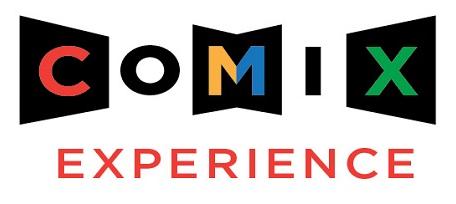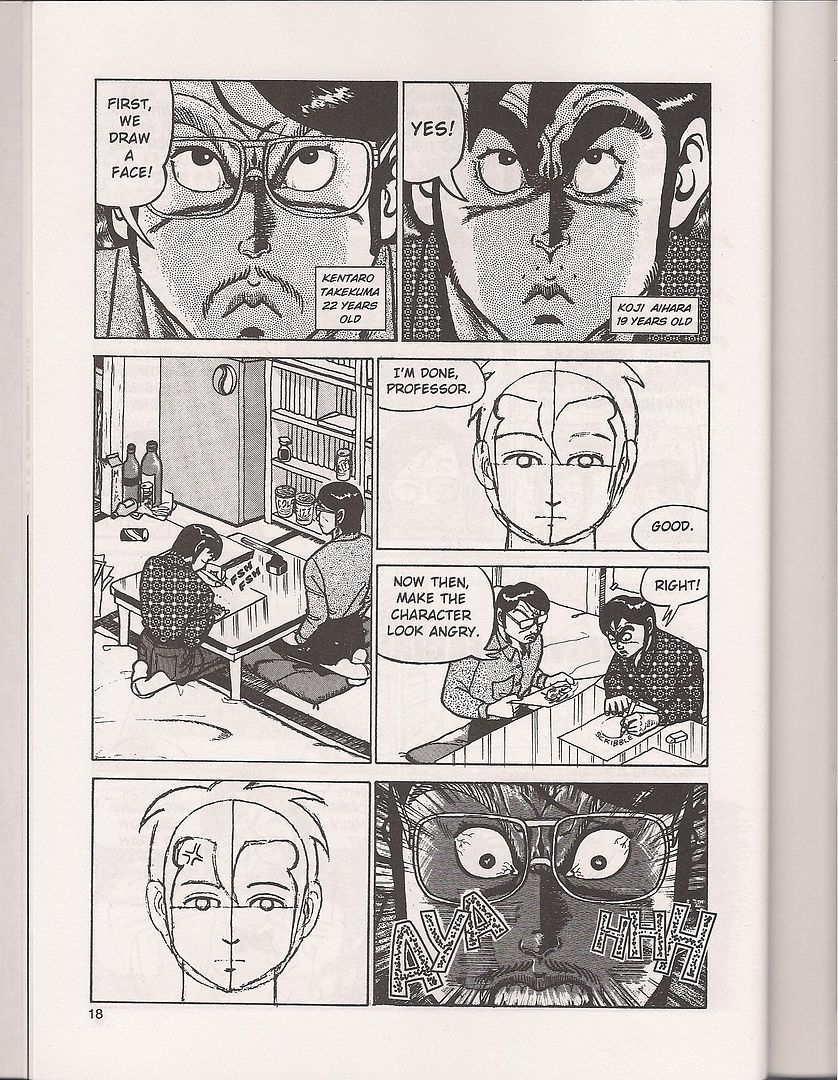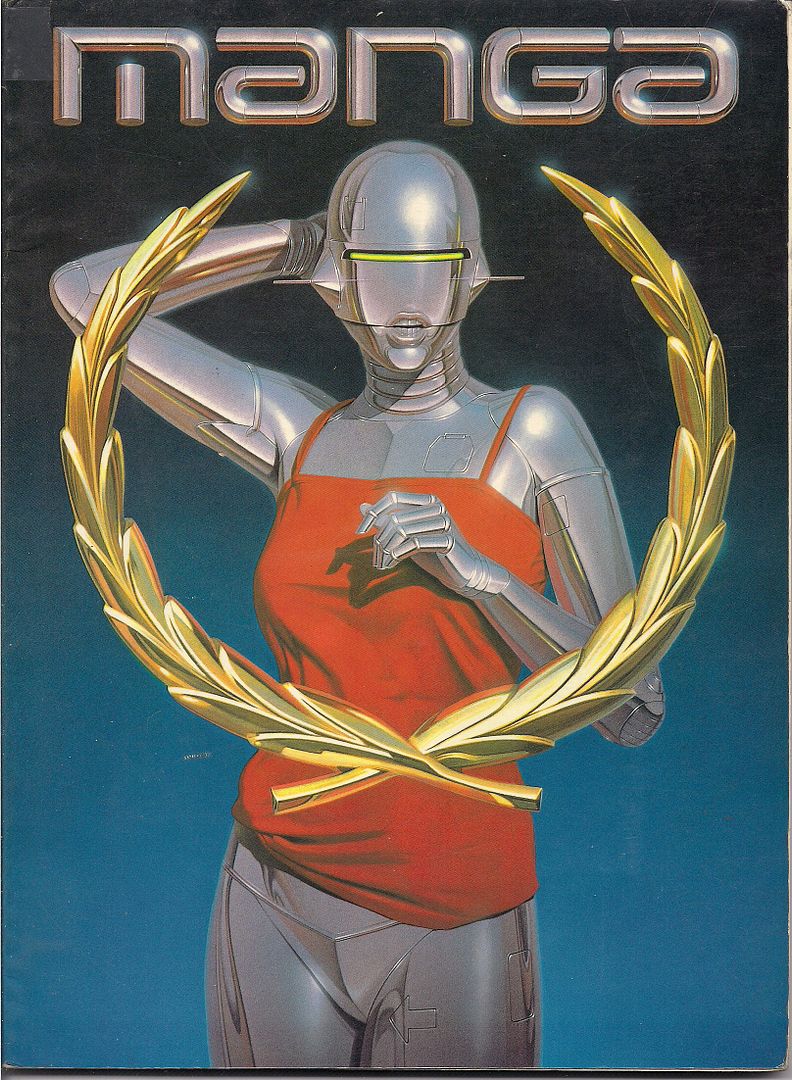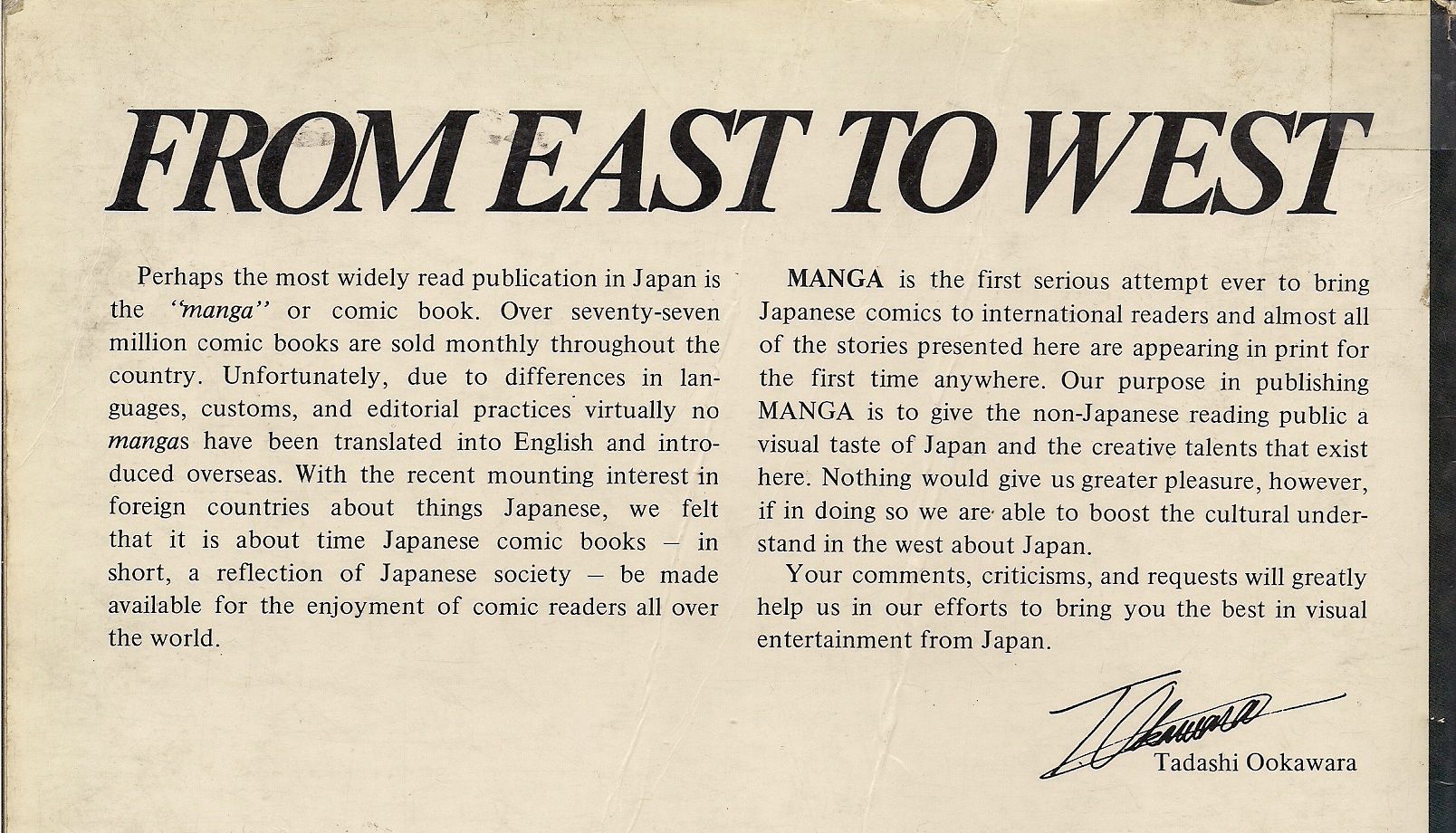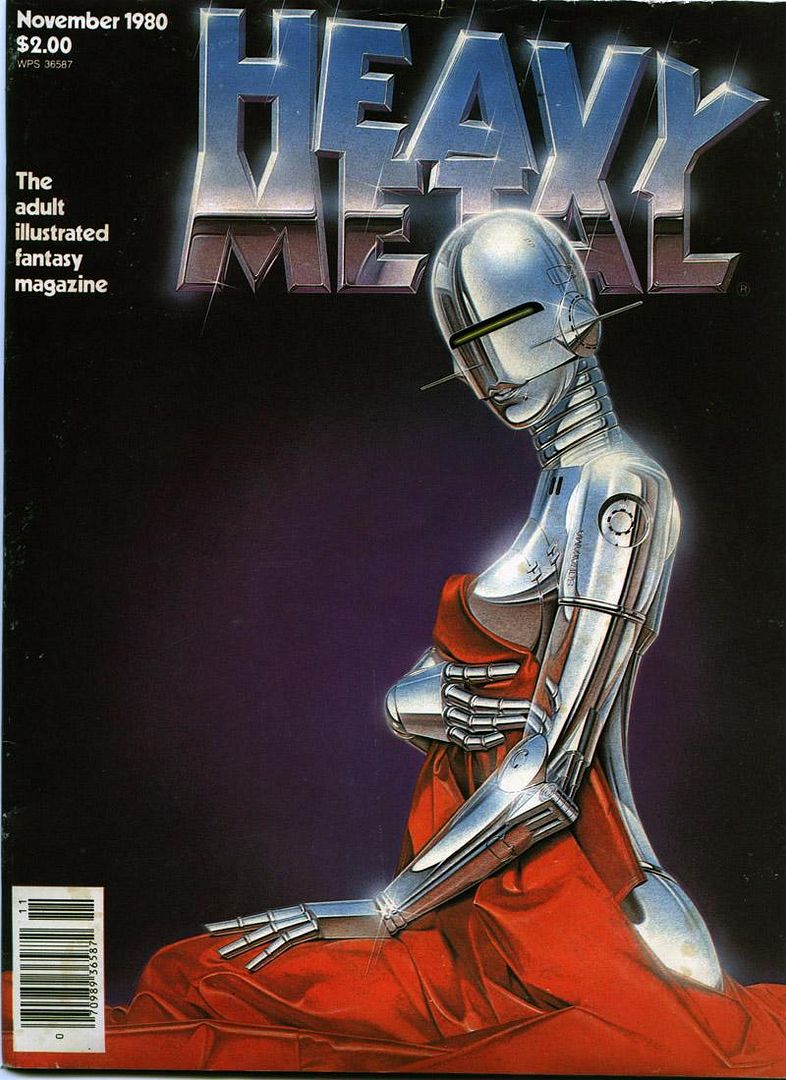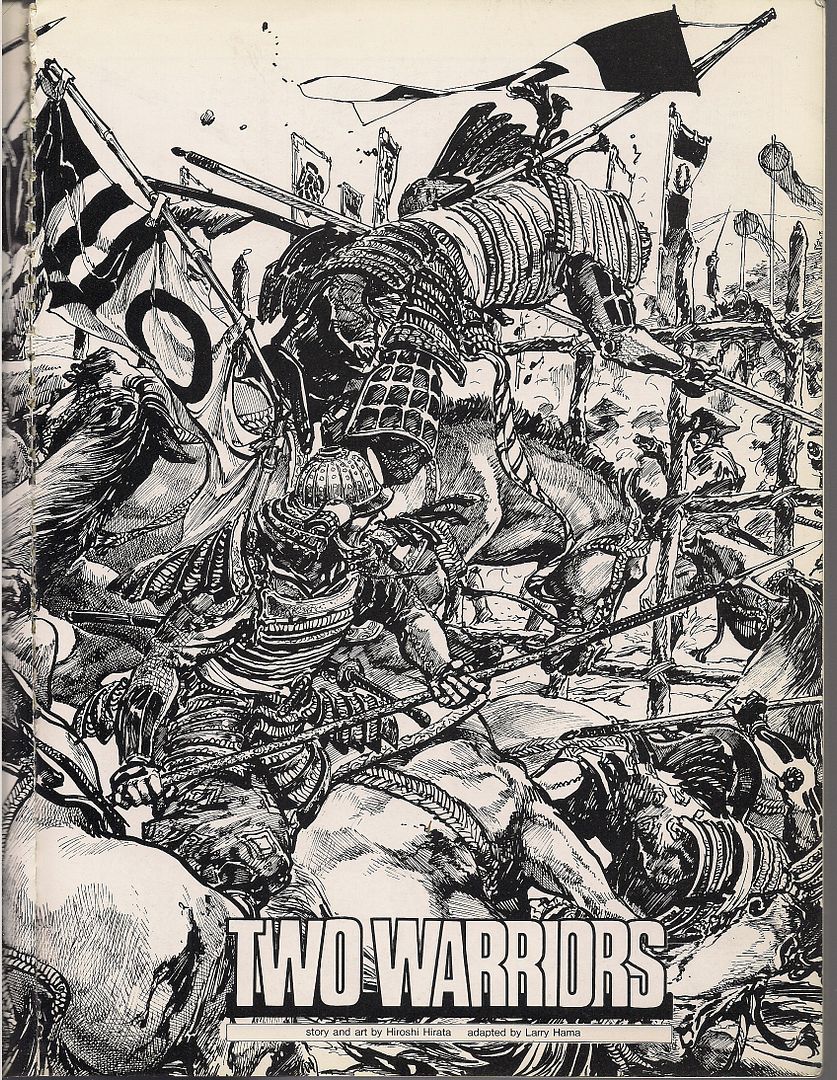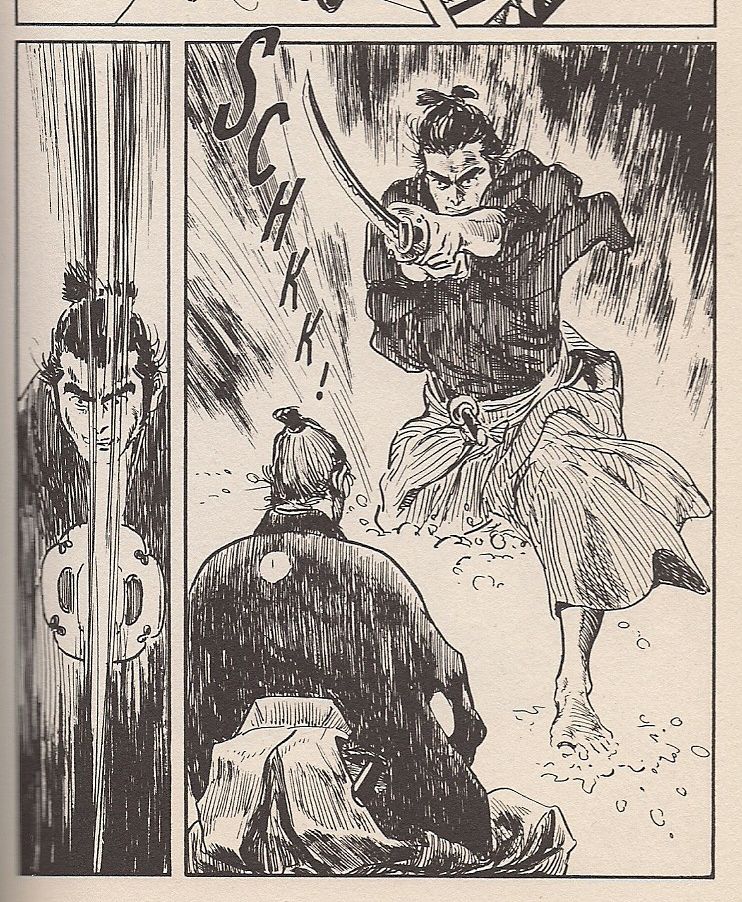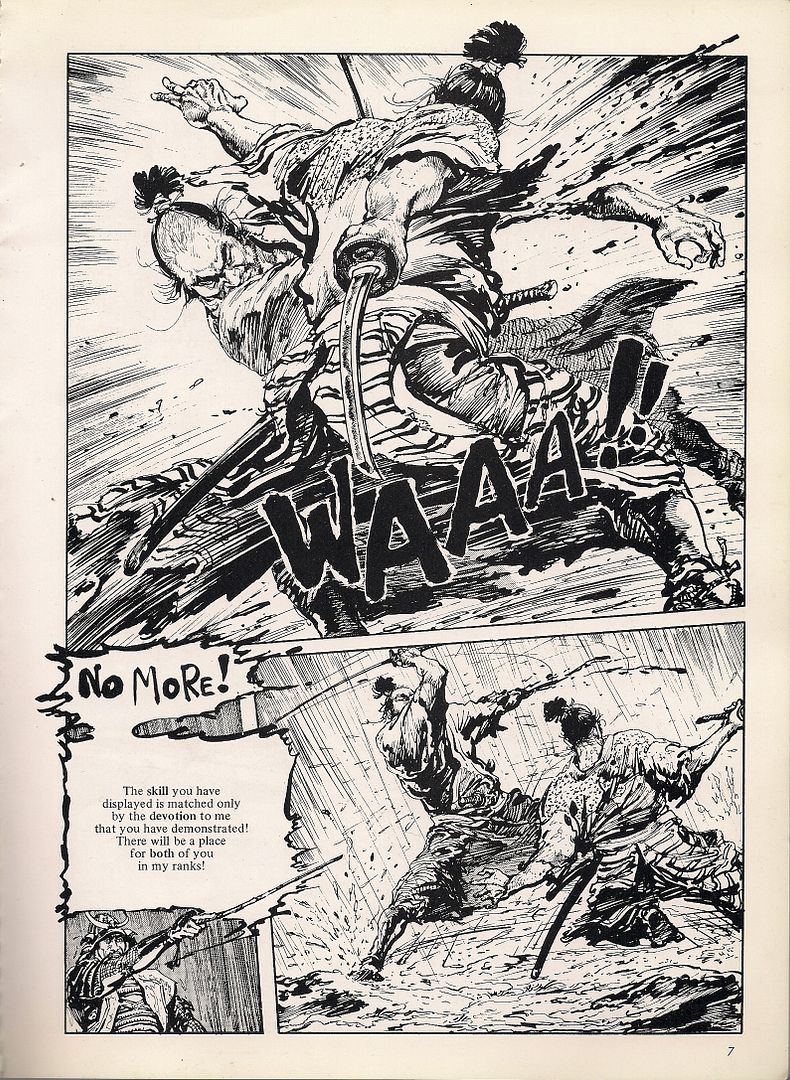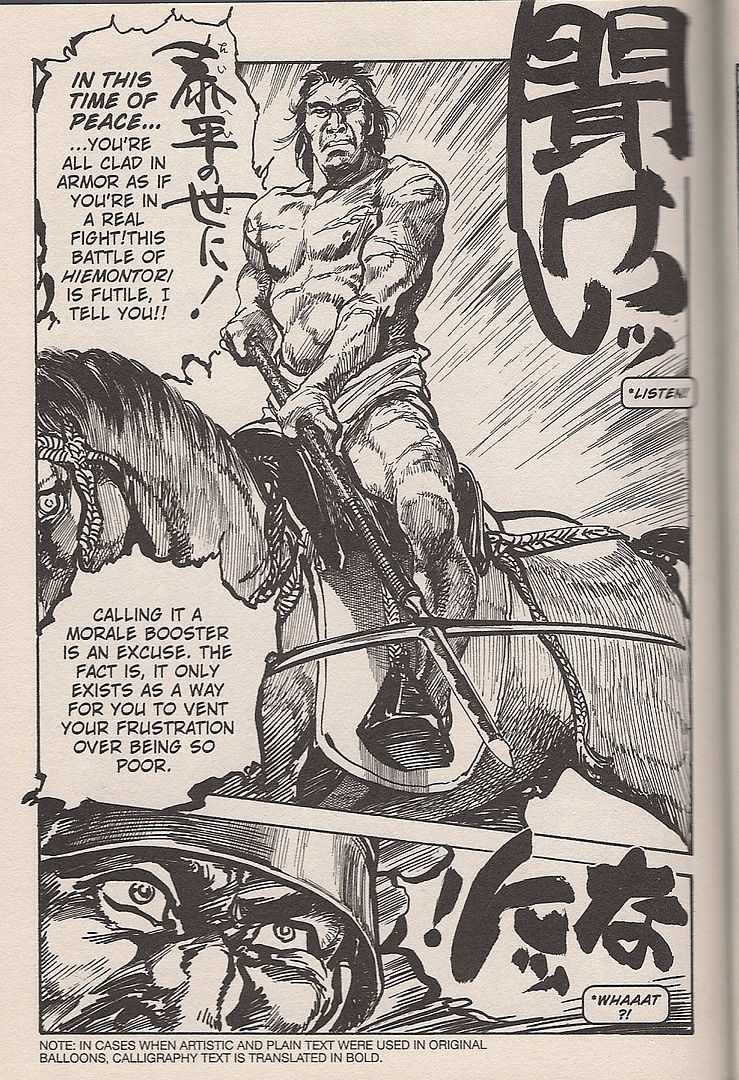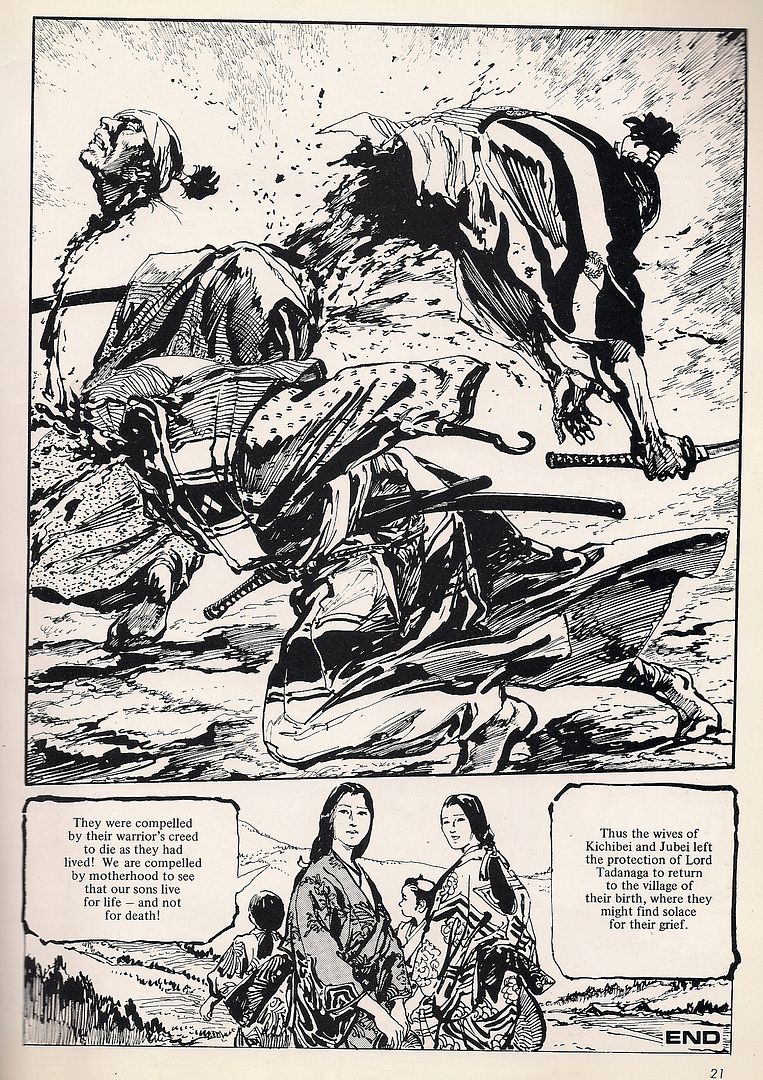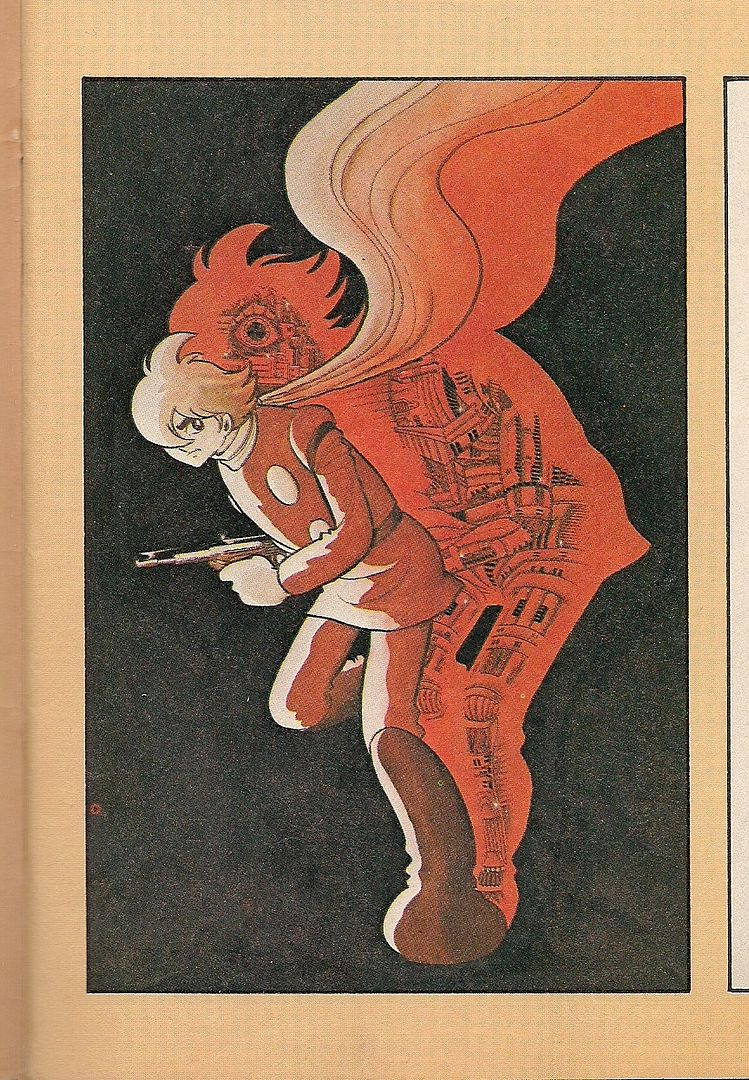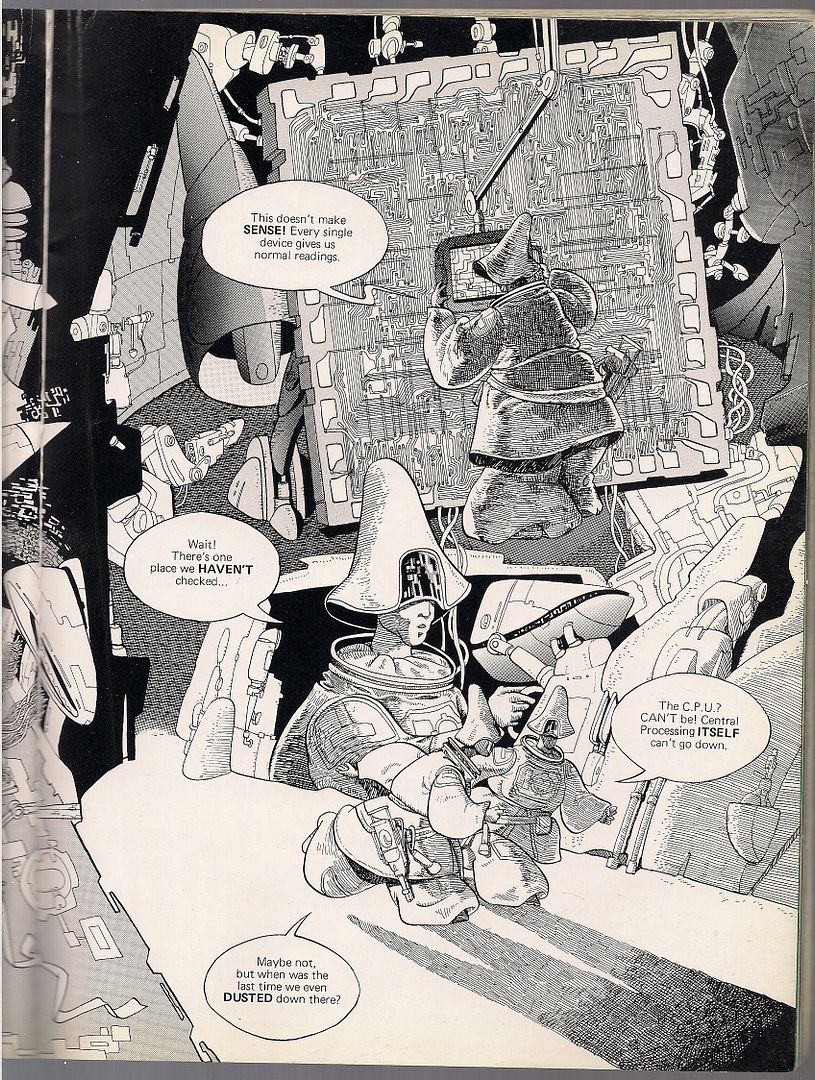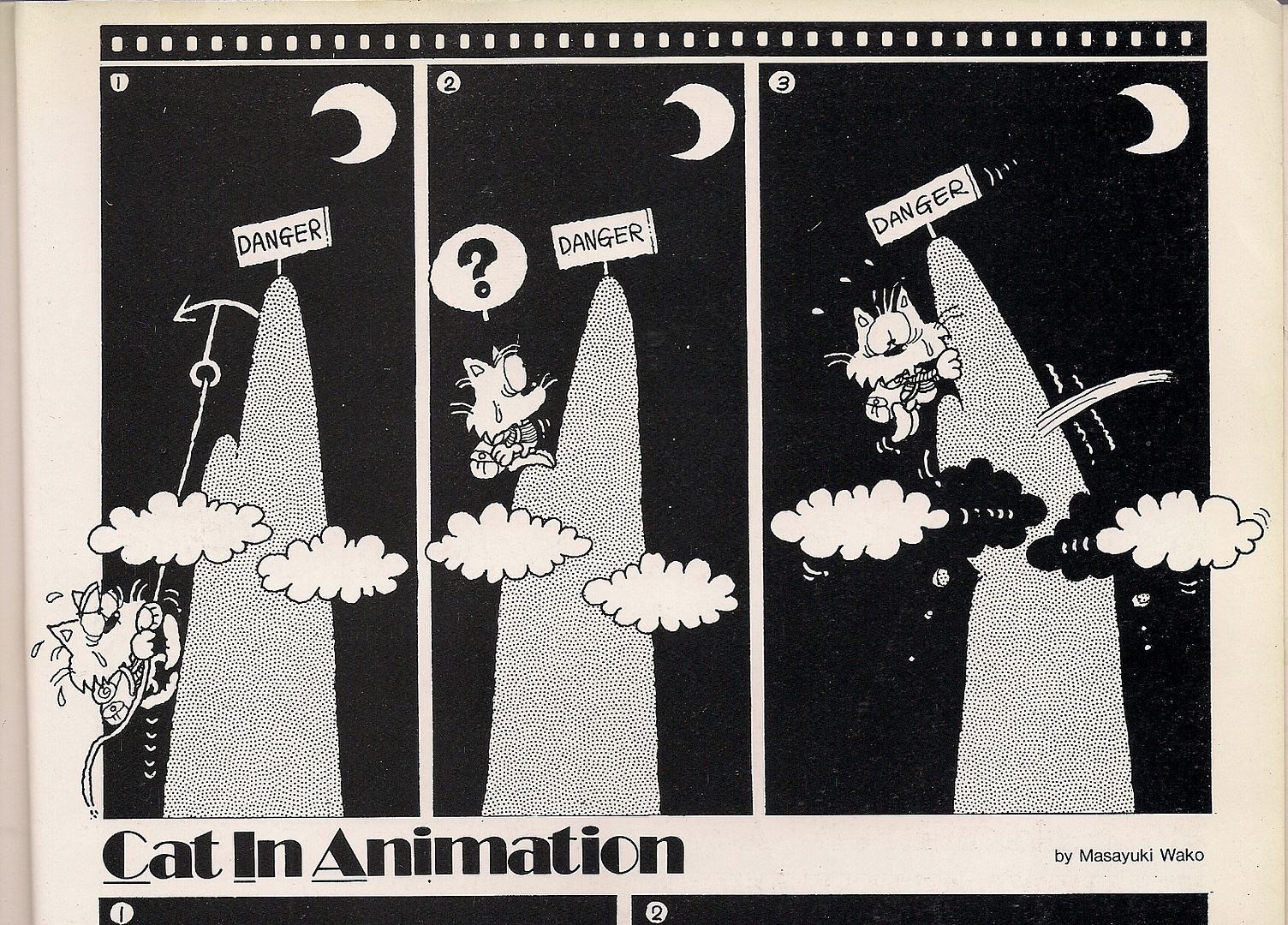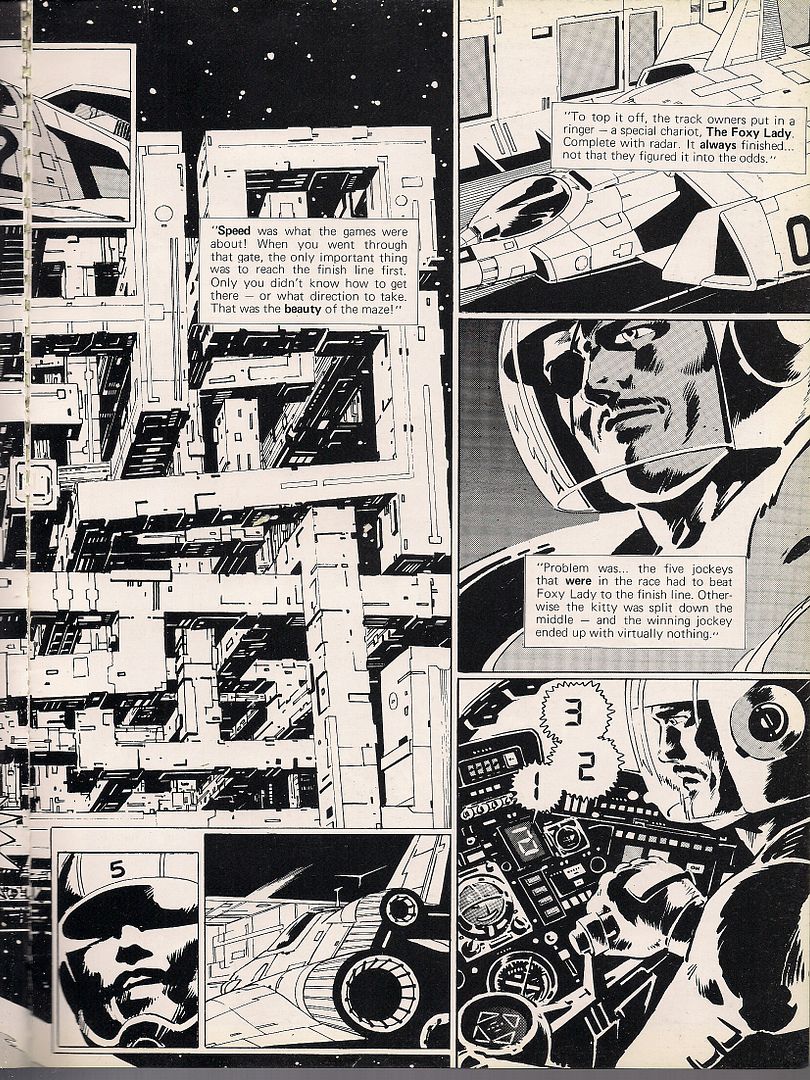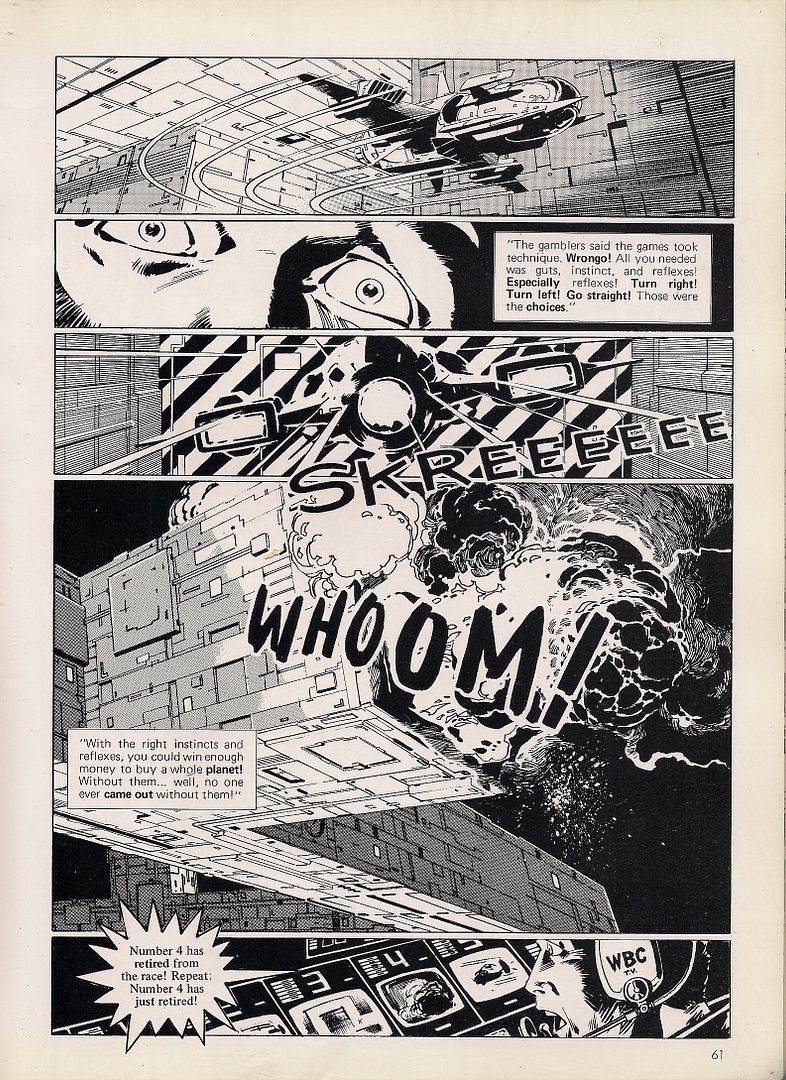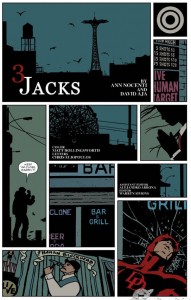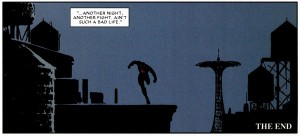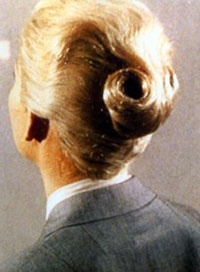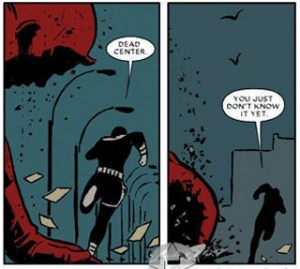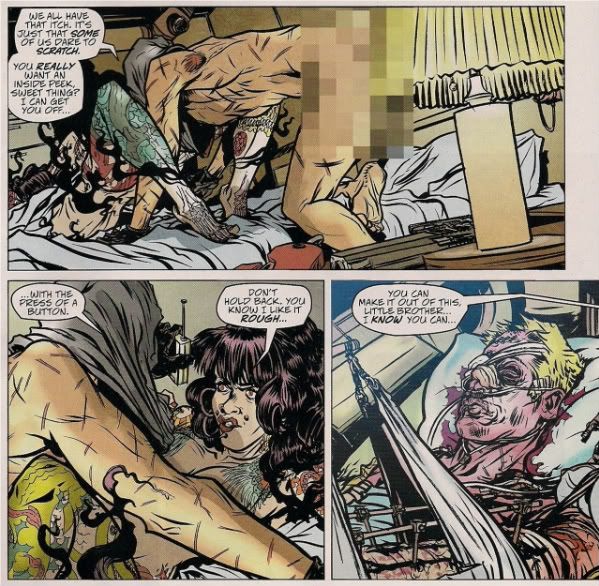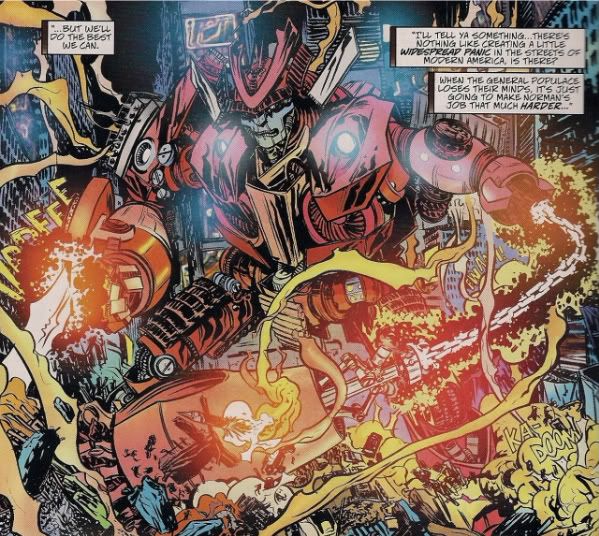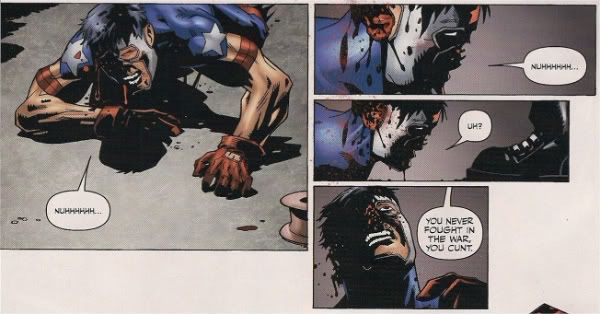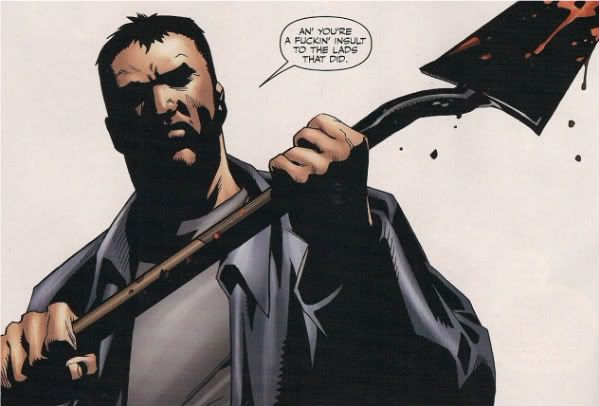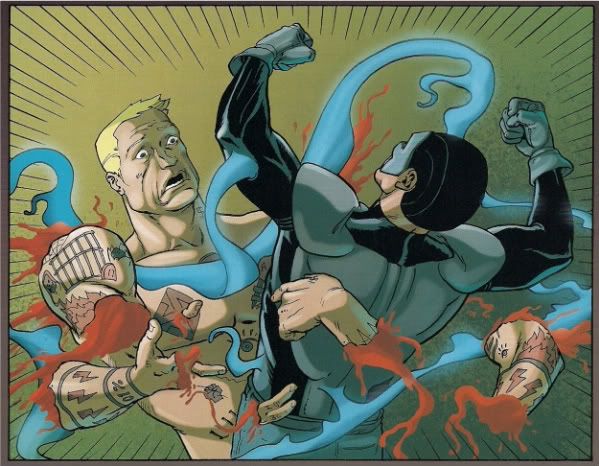 COMICS: All blow.
Instead, I've been reading CRIME NOVELS.
COMICS: All blow.
Instead, I've been reading CRIME NOVELS.
 I turned my attention to the girl beside me. She was a reasonably sized, well-proportioned, dark-haired, basically sound specimen of human female, but she was doing her best to hide the fact, at least the female fact. She had a boy’s haircut, or what used to be a boy’s haircut before they all started letting it grow. She also had a boy’s pants on, complete with fly—pretty soon nothing will be safe from women’s lib, not even our jock-straps.
-- from MATT HELM: THE INTRIGUERS, by Donald Hamilton.
I turned my attention to the girl beside me. She was a reasonably sized, well-proportioned, dark-haired, basically sound specimen of human female, but she was doing her best to hide the fact, at least the female fact. She had a boy’s haircut, or what used to be a boy’s haircut before they all started letting it grow. She also had a boy’s pants on, complete with fly—pretty soon nothing will be safe from women’s lib, not even our jock-straps.
-- from MATT HELM: THE INTRIGUERS, by Donald Hamilton.
SEVERANCE PACKAGE by Duane Swiercynski:
The back cover promised action: a group of office drones show up for a meeting at corporate headquarters, and their boss tells them (1) they’ve been working for a front organization for the CIA, (2) the CIA’s shutting down the operation, (3) they all know too much, and (4) they either immediately agree to take poison or they will be shot to death.
Except the back cover’s a bit of a bait-n-switch. That entire elaborate premise is pretty much resolved in the first 50 pages. The next 200 pages devolve rapidly into a one-joke slasher movie. It’s not BATTLE ROYALE in an office, like I hoped; it’s more JASON TAKES MANHATTAN, just set in the Nakatomi Plaza.
The SEVERANCE PACKAGE characters are all obnoxious slasher-movie characters, just an office variety instead of a teen variety: boss, secretary, dragon lady, a completely random “heroic writer” character for no reason, etc. There’s the slightest hint of a gender-based critique of corporate life, but that mostly gets drowned out in explosions.
Swiercynski almost gets by on style: single-page illustrations, text messages, layout hijinks. Simple sentences; fast-pace; everything fast, fast, fast. He almost makes up for story with verve. The giddiness is likable. If it’s not quite a book, you know, it’s at least not the worst popcorn movie. Sometimes, being able to turn pages rapidly is enough for me. Sometimes, I’m on airplane.
I suppose I wasn’t a very receptive audience because this book had the misfortune of following Will Beall’s L.A. REX. Beall’s a LAPD Homicide detective stationed in South Central; maybe I gave his splattergore more credit for that reason. Here’s a sample: They’d also jammed a tin funnel into the man’s right ear and poured drain cleaner down his ear canal. The open bottle of Draino stood on the counter next to the sink. Blood and yellowish matter had leaked from that ear down the side of his face. Packed into the guy’s eye sockets, nose and slack mouth, thousands of pale maggots, each no larger than a grain of rice, wriggled and moiled.
SEVERANCE PACKAGE was wire fu, by comparison. More action than violence.
 Swiercynski writes comics, too: IRON FIST and CABLE for Marvel. That’s been a thing with Marvel lately— collecting crime novelists. Hurwitz and Gishler and Huston and whoever else. I hadn’t read any of Swiercynski’s comic work, so I looked at a random issue of CABLE after I read his novel. If I’m remembering this right: Cable was on a farm in the future, wearing overalls; he fought bugs. If you want a comic about cyborgs fighting bugs on a farm—that happened. Ariel Olivetti drew it, so if you want the farmer to have muscles painted top of his other muscles, that issue may have just gone from an A-plus to an A-plus-plus for you.
Swiercynski writes comics, too: IRON FIST and CABLE for Marvel. That’s been a thing with Marvel lately— collecting crime novelists. Hurwitz and Gishler and Huston and whoever else. I hadn’t read any of Swiercynski’s comic work, so I looked at a random issue of CABLE after I read his novel. If I’m remembering this right: Cable was on a farm in the future, wearing overalls; he fought bugs. If you want a comic about cyborgs fighting bugs on a farm—that happened. Ariel Olivetti drew it, so if you want the farmer to have muscles painted top of his other muscles, that issue may have just gone from an A-plus to an A-plus-plus for you.
They got themselves a novelist to write that comic, though. There’s a sort of inherent perversity to hiring suspense writers to write mainstream comics; is anything less suspenseful on this Earth than a mainstream comic book?
1) The main characters all live.
2) The dead characters come back to life.
3) Every plot is announced ahead of time.
4) The plots are thoroughly debated online prior to the book being offered for sale—people argue whether or not something SHOULD be the plot of a comic they haven’t read yet.
Swiercynski the novelist tries to find graphic ways to spice up the action, to distinguish his paperback action thriller from other paperback action thrillers: Let’s put a single sentence on a page. Let’s use a page to show a piece of evidence directly to the reader rather than describe it. Let’s put speed lines in a novel. Here’s one sentence from the book, formatted as it is in the book:
“She felt like she would
be
falling
forever.”
Not a spectacular innovation, nothing craaaaazy. But: Swiercynski the novelist came to play. Swiercynski the comic book writer? He just wrote a paper movie, same as everyone else at Marvel writes right now. (And again, I haven’t read his IRON FIST; maybe I’m wrong). Marvel’s hired novelists, independent comic writers, screenwriters, playwrights, whoever, and all to them are writing comics that look and feel identical. Can you tell a Marvel comic written by an independent comic creator apart from a Marvel comic written by a cook-book author from a Marvel comic written by a jingle writer? I don’t think I can tell the difference. Is that sad? Well, maybe that’s just the commercially best way to write comics, the best way to write comics for a mass audience. Is that sad? I don’t know; what do I care. If it weren’t like that, I’d just find something else about Marvel to complain about; I’m a guy on the internet—complaining about Marvel is how we do. Is that sad?
(I figured it’d be unfair not to read a more recent issue so I went with issue #18 of CABLE. Cable is in prison in outer space, and the X-Men character Bishop is trying to kill him for some reason. Here are two panels in sequence:

 That’s two different people talking. The caption boxes in panel 1 is dialogue being spoken out loud, but the caption boxes in panel 2 is narration depicting a character’s internal monologue. And then check out this panel later in the issue:
That’s two different people talking. The caption boxes in panel 1 is dialogue being spoken out loud, but the caption boxes in panel 2 is narration depicting a character’s internal monologue. And then check out this panel later in the issue:
 So: caption boxes used where there’s “off-screen” dialogue, caption boxes with first-person internal-monologue, and then caption boxes with third-person exposition. In just 22 pages of comics? Really? On the other hand: people sometimes call Bishop the Archbishop and that’s pretty funny, maybe intentionally).
So: caption boxes used where there’s “off-screen” dialogue, caption boxes with first-person internal-monologue, and then caption boxes with third-person exposition. In just 22 pages of comics? Really? On the other hand: people sometimes call Bishop the Archbishop and that’s pretty funny, maybe intentionally).
 I made a face. “God, aren’t we mysterious! Lorna. She’s a tough one, I’ve heard. Won’t take orders from any man. Except Mac.”
I made a face. “God, aren’t we mysterious! Lorna. She’s a tough one, I’ve heard. Won’t take orders from any man. Except Mac.”
“Why should she? Why should a woman have to work under a man if she’s as good as a man?”
I said, “Well, it’s the customary reproductive position, but I understand there are others.”
-- from MATT HELM: THE INTRIGUERS, by Donald Hamilton.
THE OUTFIT by DONALD WESTALKE:
I’d read Donald Westlake books when I was young, probably too young to understand his books. My favorite was his comedic murder mystery set in the world of tabloids, TRUST ME ON THIS. But: I’d never read Parker. I obviously knew about Parker, but I knew Parker had inspired some pretty terrible imitators: I’ve had the misfortune of sitting through an Andy Vachss book, say. Vachss alone was enough to scare me away from ever reading Parker.
Then, Westlake passed away. So: THE OUTFIT.
THE OUTFIT doesn’t waste your time; the first sentence is “When the woman screamed, Parker awoke and rolled off the bed.” It’s a nice sign you’re in good hands. This is the third of the Parker novels, re-released in 2008. I’ll try not to spoil the plot, but: bad guys screw with Parker; they find out that’s a bad idea. (Okay, actually, I think I just spoiled the plot. Sorry.)
Anyways, the bad guys lose because they’re soft, and Parker wins because he’s hard. And getting harder—it appears that a regular part of Parker’s schtick, I think maybe left out of the movies, is that Parker’s violent adventures sexually arouse Parker. You know those video games where the more you hit people, the more your character’s “rage meter” fills up? It’s like that. Except instead of an empty rage meter, imagine Lee Marvin’s flaccid penis.
What I liked about the OUTFIT was it felt like just the good parts: Parker murders someone, Parker solves a logistical problem of living outside of the law, there are a series of heists, and then Parker murders some more, and the end; go home. Just the good parts-- Donald Westlake’s Boner-Jamz, if you will. It’s not entirely perfect: one of the book’s subplots is left to a later book to resolve. Plus, if you like heists like I do, the book basically peaks in the middle with the heists; the book’s final action scene isn’t much fun by comparison.
But I probably prefer Westlake to “Richard Stark”; Westlake had wit. The “tough loners in suits” genre—at a certain point, it just seems like schtick. I don’t think I read crime novels for the cartoon characters—the knight errant detective, the femme fatale, the corpulent mobsters, any of that. Oh, it’s fun. But it sort of makes crime and greed and vice seem distant and remote, the sport of a different breed of cat, instead of pervasive, constant, a force of nature, a foundation stone. Parker seems apart from the world because the rest of the world is slow and dim and bovine; which has a truth to it, certainly at the time the OUTFIT was written. But: characters who are “apart from the world” are basically romantic fantasies, whether it’s Parker or Phillip Marlowe or what have you. They’re entertaining, but a more honest diagnosis would probably be grimmer.
 Other nerds are likely to be flocking to this book in coming days—it’s the next book Darwyn Cooke intends to adapt as part of the 4-book adaptation series he’s created, published by IDW. The OUTFIT promises that we’ll get to see Cooke facing an interesting challenge—Parker disappears entirely for at least half of the book, the book’s best half. All of the heists? Parker ain’t there; he’s not the one pulling the heists in the OUTFIT. How will Cooke approach those heists?
Other nerds are likely to be flocking to this book in coming days—it’s the next book Darwyn Cooke intends to adapt as part of the 4-book adaptation series he’s created, published by IDW. The OUTFIT promises that we’ll get to see Cooke facing an interesting challenge—Parker disappears entirely for at least half of the book, the book’s best half. All of the heists? Parker ain’t there; he’s not the one pulling the heists in the OUTFIT. How will Cooke approach those heists?
There might be differing opinions how to answer that question after THE HUNTER, which has gotten a wide range of reactions. There’s bound to be—the underlying fantasy of this type of loner character is of total detachment from the world, being able to dispense with violence and sex without the messy business of the soul being involved. That sort of theme’s no problem for prose. Comics, though? “Here’s a character who doesn’t care about anything in the world except for his money and his women. I spent 5 hours drawing him by carefully dipping a Windsor-Newton brush into a well of India ink and moving the brush along a sheet of Bristol Board.” There’s a disconnect there.
Cooke’s solution seems to have rankled, though it’s actually what I liked about his adaptation more than anything: some panels are lavishly executed, but for the most part, the pages don’t feel too careful. Some of the long-shots especially nears stick-figure theatre. The line weights are inconsistent. He’s given critics plenty of ammunition.
But I think that’s what I liked about it: with Cooke laying on the book’s blue-color by hand, the pages just seem still... wet. Fresh from his drawing board. Many artists complain that some energy or power gets lost moving from thumbnails to finished pages—the HUNTER pages feel like they’re focused on retaining that thumbnail energy. Cooke doesn’t try to just adapt the surface story, but to match Westlake’s spare prose. To me, that was fun. Can I imagine a prettier comic? Sure. Would a prettier comic have better served the material? I don’t know if I necessarily agree with that.
Which isn’t to say Cooke doesn’t make some terrible choices along the way: He blows the revenge pages—the gestures hardly have any violence to them, at all. His character designs for women are deadly dull, pretty-girls from animation, Sketchbook Session jerk-off girls. Bruce Wayne: Parker isn’t too thrilling to watch. And if ever a book didn’t need Blam Krak Pow sound effects…
(I can’t say I was too persuaded by the argument that Cooke’s vision of the past was too focused on “cool” iconography. The movie POINT BLANK has a 10-minute long bongo-jam in it; there’s at least 10 minutes of a guy on the bongos with another guy going “YEAH” periodically, at least 10 minutes. Cool seems like kind of the point of the entire exercise for everyone who’s ever touched this material. You can have Dortmunder with Robert Redford in the 70’s, or you can have Dortmunder with Martin Lawrence, you know? But maybe I misunderstood the argument.).
If I had a problem with the HUNTER, though: I think any adaptation invites the question of Why this, why now? Parker’s about the lone, rugged individual facing down the organization. But: I guess I associate “rugged individualism” as the theme of, well, douche-bags. Rugged individualism sounds cute when Glen Beck’s crying about it, crying his crazy little eyes out, but you put enough rugged individualism into your coffee, next thing you know: you’re the crazy-fuck hick screaming that the President’s a liar in the middle of a speech to Congress. The rugged individual out for his own greedy advantage destroying the work of many people organized for their mutual good? We have that: it’s called Wall Street; how’s that working out for everybody? Yeah, the HUNTER is anti-corporate, but Parker’s hardly a hippie WTO-protestor; he’s just a different breed of capitalist.
So: I couldn’t really tell you why this adaptation exists other than for Cooke to wallow in that aesthetic universe. Is that enough? Is that anything?
 I grinned. “There you sit, wearing a man’s zip-up-the-front pants and a man’s hairdo, giving me that poor-downtrodden-women line. Just what do you think would happen to me if I started wandering around the countryside in a woman’s skirt with my hair clear down my back? What would happen to any man who tried it? You know damn well we’d be locked up as transvestite perverts so fast it would make your head swim. Hell, we poor men can’t let our hair grow even a little without half the cops in the country trying to bash in our heads, but you ladies can cut it all off and nobody bats an eye. Which sex was it you said was being discriminated against?” She gave me another scorching look, obviously unimpressed by my argument. Well, maybe it wasn’t much of an argument.
I grinned. “There you sit, wearing a man’s zip-up-the-front pants and a man’s hairdo, giving me that poor-downtrodden-women line. Just what do you think would happen to me if I started wandering around the countryside in a woman’s skirt with my hair clear down my back? What would happen to any man who tried it? You know damn well we’d be locked up as transvestite perverts so fast it would make your head swim. Hell, we poor men can’t let our hair grow even a little without half the cops in the country trying to bash in our heads, but you ladies can cut it all off and nobody bats an eye. Which sex was it you said was being discriminated against?” She gave me another scorching look, obviously unimpressed by my argument. Well, maybe it wasn’t much of an argument.
-- from MATT HELM: THE INTRIGUERS, by Donald Hamilton.
The final book was Ian Rankin’s HIDE AND SEEK. Which…
There’s one kind of crime novel I avoid, the most common type: the recurring detective series. I think it’s all the jazz music. The serial detective novel will invariably have some detective in it that’s way into jazz. There’ll always be a scene of them, feeling lonely, putting on Miles Davis because, hey, man, they’re not modern guys, they don’t listen to rock-n-roll. Detectives in lonely-man detective novels don’t listen to Jay-Z.
Rankin from HIDE AND SEEK: “John Rebus’s flat was his castle. Once through the door, he would pull up the drawbridge and let his mind go blank, emptying himself of the world for as long as he could. He would pour himself a drink, put some tenor sax music on the cassette machine, and pick up a book.”
Tenor sax music. Because the alto sax is for communists and panty-sniffers! To be fair, the book was published in 1990. In 1990, I thought Color Me Badd was the best band of all time. And by “1990”, I mean last year. But the whole “lonely man” theme—you know, going from superhero comics to that kind of crime book, is it just exchanging one kind of No Girlz Allowed club for another? I don’t know.
This is probably the most like a “real novel” than any of the three. The characters are vivid and their actions are unpredictable; the details of subplots have themes that resonate with the main plotline’s themes; moments seem dictated by character more than plot. The mystery isn’t the focus; the mystery is an excuse to spend time exploring procedure and characters and setting. The mystery is a window into Edinburgh in the 1990’s, grappling with the early days of gentrification.
(From the perspective of a severe recession, though, the whole gentrification thing sort of loses its teeth. People used to get mad that their neighborhoods were getting TOO RICH. Oh noes! Good thing we don’t have to worry about that anymore.)
The biggest problem being: the mystery, once solved, is nothing much at all. The solution to the mystery, the dark secret that threatens to topple polite Edinburgh society? You can buy it now legally; you can find it for free on the internet. What might have become shocking in 1990 has become a consumer product by 2009. It’s 272 pages, but it builds towards nothing that sticks. Subplots, character, prose, themes—that’s all nice, but a mystery novel that doesn’t have much of a solution? Can you still call that a success? I loved the story in that porn movie.
Rankin’s mystery is “who killed a junkie”, the pathos supposedly being no one cares. Except: I don’t know that I cared either. Does that make me a bad person? Probably.
 DC’s published Ian Rankin’s name across 4/5ths of the cover of DARK ENTRIES, one of the launch titles of their new Vertigo Anal-Sex line. Strike that, supposedly DARK ENTRIES is launching the Vertigo Crime line.
DC’s published Ian Rankin’s name across 4/5ths of the cover of DARK ENTRIES, one of the launch titles of their new Vertigo Anal-Sex line. Strike that, supposedly DARK ENTRIES is launching the Vertigo Crime line.
Funny thing: the launch book for Vertigo Crime? NOT A CRIME NOVEL. It’s a horror comic. There’s hardly any crime in it even. It’s a haunted house story, starring John Constantine. They launched Vertigo Crime with a Vertigo horror comic! Exclamation mark!
So: a year from now, if we’re unlucky and Vertigo Crime no longer exists, and some so-and-so is screeching that “None of youse fools on the internet people could have done better because we are geniuses who thought of EVERYTHING” … I would suggest that maybe one thing they could have done differently is launched their crime line with crime fiction…? Just a silly thought.
I mean, I’m rooting for Vertigo Crime because—I’m the audience for crime comics, 100%; the editors and creators announced for this line are all people I usually expect to always at least be interesting, if not always successful. And launching with DARK ENTRIES is not the worst idea: Rankin’s a name in crime fiction, so launching with the biggest name they could get makes a certain sense, even if he didn’t actually in point of fact write anything resembling a crime novel. There’s even a quote from Brian Vaughan on the back that mentions “haunted house” story, if you’re especially attentive. There’s also crime on the cover, and not in the book, though, so…
Is the book any good as a horror comic? Not really. I enjoyed Werther Dell’edra’s art, truly I did—lots of blacks, very much my kind of style. Except: he’s drawing a haunted house comic, so setting it in a very definite place with very definite background drawings has an increased importance. Dell’edra seems better with mood and suggestion than drawing definite surroundings. The geography of the house is just never precisely delineated enough to be scary.
Rankin’s story is a one-gag story about reality television. The gag didn’t make me laugh; might do something for you. Reality television is shit, but: who cares? Caring about how shitty reality television is, that’s nearly as boring as reality television. There are some fun details; the “solution” to the book’s “mystery” is at least a little clever. The ending works; the ending is a good, classic John Constantine ending (as far as I know, having not read much Constantine).
But: Rankin probably hasn’t read much Junji Ito. The DARK ENTRIES team tries to do monsters-popping-out-of-the-dark scares. Those are movie-scares, not comic-scares. The “Oh, I’m surprised and I will jump out of my movie seat because I’m surprised” scares. Those don’t work. It’s obvious those don’t work. They don’t work in books; god knows why a novelist would think they’d work in comics.
Junji Ito’s comics are scary. NIJIGAHARA HOLOGRAPH was scary. Scary because they’re comics. Comics take fucking forever to make. A comic where you’re forced to imagine a person spending fucking forever to create something where the images don't add up, something that’s wrong, that's diseased, something that doesn’t satisfy the “rules”? That can be scary. But: that’s not DARK ENTRIES. DARK ENTRIES is just another installment in the commercially successful adventures of John Constantine. What’s supposed to be scary about that?
I got angry after I read DARK ENTRIES. (I was happy how angry I got, that a comic could still get me angry, that I’m not completely apathetic about them. Ooh: I got so angry.) Monsters, spooky-creatures, everything DARK ENTRIES trucks in is bullshit. Rankin, as a crime novelist, seems to know that; as a novelist. HIDE AND SEEK doesn’t have monsters; it doesn’t need them—it has people. HIDE AND SEEK, if it has a theme—no, if crime fiction has a theme, it’s that there are no demons or devils out there causing the evils of the world, that blaming the wrongs of life on monsters from religious myths is what children do, that the evils of the world are the result of people, people being greedy, needy, evil, or, hell, just bored.
There’s a book I read a few years ago, Bernard Lefkowitz’s OUR GUYS-- it got made into an Eric Stoltz Movie of the Week. The book is about how a suburban high school football team gang-raped a retarded girl with a broom handle, and how they basically got away with it. But that’s not the bad part. Here’s the bad part: there’s a classmate of the football team named Mari, and when the football team gets charged with raping a retarded girl with a broom handle, Mari gets an idea. She befriends the retarded girl—she becomes maybe the first friend that retarded girl ever has. And she wears a wire and tape records their conversations and convinces the retarded girl to talk about how much she enjoyed having sex with the broom handle, so she can help the football team avoid prosecution.
Satan is bullshit. Satan doesn’t need to exist; Mari already does.
![]() I haven't done a quick-hits look at the week's front-of-Previews-type comics in literally years now. Here's a look at some books that came out today that I enjoyed. Perhaps you will too. See you after the jump...
I haven't done a quick-hits look at the week's front-of-Previews-type comics in literally years now. Here's a look at some books that came out today that I enjoyed. Perhaps you will too. See you after the jump...
